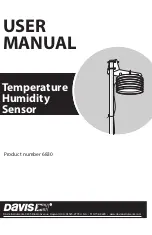
BC4000 Series RAID Controllers
User Manual
02/13/06
B ro ad c om C o r p or at i on
Page 132
Creating New Arrays: bcadm --create
Document
BC4000-UM100-R
--priority <1...10>, -p <1...10>
Sets the background initialization task priority from 1 to 10, with 10 being the highest. For redundant array
types only.
--preferred-id <64bit_hex>, -pid <64bit_hex>
Sets the 64-bit array ID. By default, the ID is randomly generated.
--scan-array, -sa
Enables a continuous read operation of the specified arrays in the background, accessing every block of the
array from beginning to end. The array scan takes place only when the array is idle (that is, when there is no
input to or output from the array).
--leave-existing-data, -led
Leaves the existing data on the disk(s) untouched after the array is created. This option can be used to try to
recover user data when an array has been accidentally deleted or the configuration information is lost, but the
data is still intact. When you create an array with this option enabled, new configuration information is written
while trying to use exactly the same disk space that was used before. Unless you immediately recreate the
array after deleting it and no other tasks have been performed on the array, the likelihood of recovering data
with this method is very low.
--disk, -d
Disk is a required qualifier used to specify disks, where <list> identifies the disk number(s).
E
XAMPLES
Note:
On Linux, anywhere that an asterisk (*) is used in a command as a wildcard argument, you
need to prevent shell expansion by either adding quotes around the asterisk (' or ") or preceding it
with a backslash (\).
Example 1:
Create a RAID5 set of the maximum possible size using all disks.
bcadm -C --raid5 --disk *
Example 2:
Create a 1TB RAID50 set using 8 disks with 4 disks in each
submember.
bcadm -C --raid50 --sub-member 4 --disk 1 2 3 4 5 6 7 8
--size 1000000
Example 3:
Create a RAID1 set of the maximum possible size, with a spare disk
and without a background initialization task.
bcadm -C --raid1 --spare-disk 3 --disk 1 2 --no-sync
Example 4:
Print the maximum size a RAID5 array could be using all disks and
the distributed spare option.
bcadm -C --raid5 --d-spare --disk * --max-size
















































